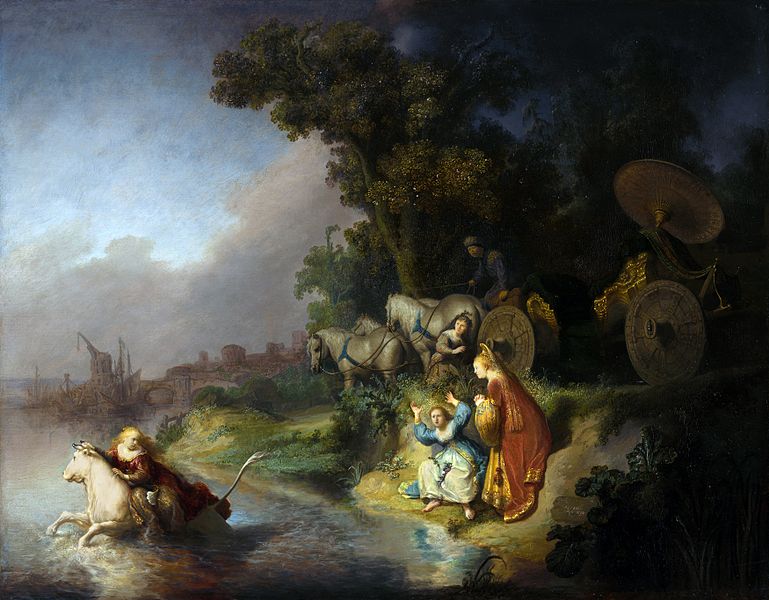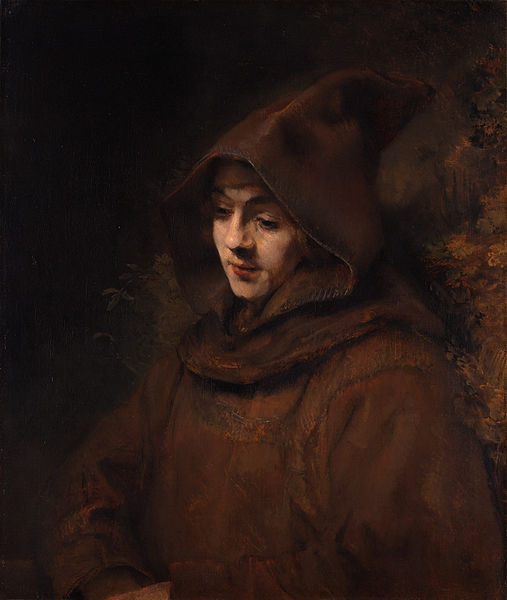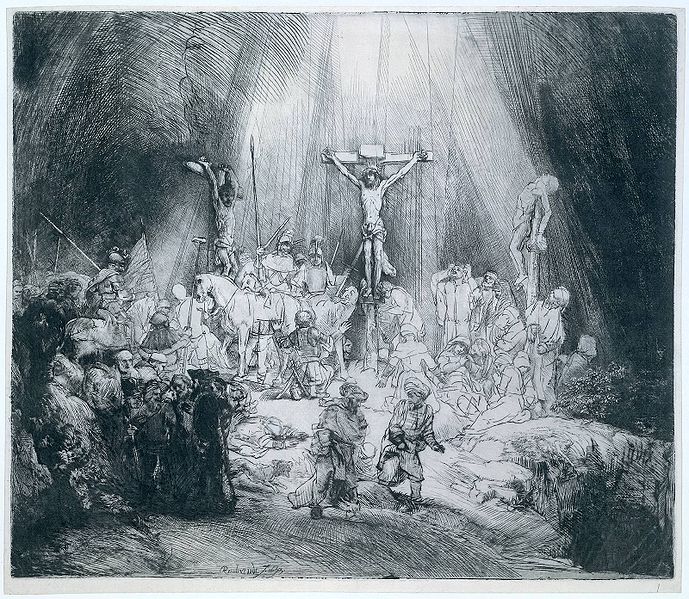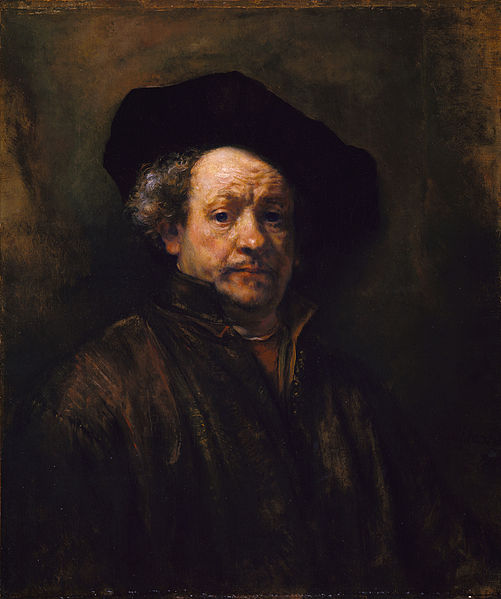| Rembrandt Famous Paintings | |
| The Night Watch | |
| The Return of the Prodigal Son | |
| Self-Portrait | |
| The Jewish Bride | |
| Danaë | |
| The Mill | |
| The Storm on the Sea of Galilee | |
| The Blinding of Samson | |
| The Three Trees |
Rembrandt Harmenszoon van Rijn was born July 15, 1606 in Leiden, Netherlands. He was the eighth out of nine children. His dad was a miller, and so the family was well off. He attended Latin school during his younger years, and enrolled at the University of Leiden two months before his fourteenth birthday. There, he learned the classics, such as grammar, roman mythology, and beginning drawing. The university bored him, and he left it. Rembrandt became an apprentice to Jacob van Swanenburgh for three years, and then switched to Pieter Lastman for six months. The earliest surviving painting of Rembrandt’s is The Stoning of Saint Stephen.
In 1624, he opened his own studio in his home town, with his friend Jan Lievens. Three years later, they started accepting students. One of his students, Gerard Dou, went on to be a famous painter in that area. Sometime in 1629, a statesman named Constatijn Huygens procured Rembrandt all the commissions from the court in Hague. His reputation increased steadily.
Rembrandt moved to Amsterdam after his father died in April of 1630. He moved in with an art dealer, Hendrick van Uylenburgh. He began to practice as a professional artist full time, rather than as a teacher. Four years later, he married Hendrick’s cousin, Saskia van Uylenburgh. They were wed at the local church of St. Annaparochie. That same year, Rembrandt became burgess of Amsterdam.
 One of his most famous paintings, The Blinding of Samson, was painted in 1636. The story of the painting is taken from the Bible. Samson is a very strong man, and the source of his strength is his hair. He tells this woman that woos him into loving her, and she cuts it off. She runs to her buddies, and they gauge his eyes out. The theatricality of this piece is amazing. The chiaroscuro forces the surrounding picture to be dark, and kind of curtain for the stage which is set up in the center. There, the light bursts through, showing Samson being blinded by a less worthy individual, Philistine. Delilah, the girl who tricked him, is in the back rushing into the cave to watch. Rembrandt is considered a Baroque artist because of the use of chiaroscuro, and the dramatic events portrayed in his work.
One of his most famous paintings, The Blinding of Samson, was painted in 1636. The story of the painting is taken from the Bible. Samson is a very strong man, and the source of his strength is his hair. He tells this woman that woos him into loving her, and she cuts it off. She runs to her buddies, and they gauge his eyes out. The theatricality of this piece is amazing. The chiaroscuro forces the surrounding picture to be dark, and kind of curtain for the stage which is set up in the center. There, the light bursts through, showing Samson being blinded by a less worthy individual, Philistine. Delilah, the girl who tricked him, is in the back rushing into the cave to watch. Rembrandt is considered a Baroque artist because of the use of chiaroscuro, and the dramatic events portrayed in his work.
 In 1639, Rembrandt and Saskia move into a very prominent neighborhood. There, they had four kids. Rumbartus (1635), who died two months after being born, Cornelia (1638), who died three weeks after being born, a second daughter named Cornelia (1640), who died one week after being born, and then Titus (1642), the only one who lived. Unfortunately, Saskia died shortly after Titus was born due to Consumption. That year, he painted the Night Watch, which is nicknamed that by Sir Joshua Reynolds. This is a scene of musketeers that are supposed to accompany Marie de Medici on her voyage. When this painting was found, it had so much grime on it; it was thought to be a night scene, hence the nick name. After being cleaned though, it appeared bright as day, but the name stuck.
In 1639, Rembrandt and Saskia move into a very prominent neighborhood. There, they had four kids. Rumbartus (1635), who died two months after being born, Cornelia (1638), who died three weeks after being born, a second daughter named Cornelia (1640), who died one week after being born, and then Titus (1642), the only one who lived. Unfortunately, Saskia died shortly after Titus was born due to Consumption. That year, he painted the Night Watch, which is nicknamed that by Sir Joshua Reynolds. This is a scene of musketeers that are supposed to accompany Marie de Medici on her voyage. When this painting was found, it had so much grime on it; it was thought to be a night scene, hence the nick name. After being cleaned though, it appeared bright as day, but the name stuck.
 Rembrandt hired a maid to help him raise Titus. Her name was Hendrickje Stoffels, and they had a daughter named Cornelia, who also lived to be an adult. They never married, but since they lived together, it was called a common law marriage. In 1656, he filed bankruptcy, for his spending had increased even though his income had decreased. They moved out of the house into a more modest one, and Rembrandt was happy to leave the place that held all his bad memories.
Rembrandt hired a maid to help him raise Titus. Her name was Hendrickje Stoffels, and they had a daughter named Cornelia, who also lived to be an adult. They never married, but since they lived together, it was called a common law marriage. In 1656, he filed bankruptcy, for his spending had increased even though his income had decreased. They moved out of the house into a more modest one, and Rembrandt was happy to leave the place that held all his bad memories.
Rembrandt over his lifetime painted many self portraits; 40 to be precise. One of his better ones is the Self Portrait painted in 1658. It depicts him in an outfit from the middle ages, but he looks so serious. This comedian factor juxtaposed with such solemnity is common is most of his self portraits.
To make a living, Rembrandt and Hendrickje opened an art gallery. They sold Rembrandts, and other paintings by other local artists. They made modest earnings doing this. Hendrickje died in 1663, but he still operated the gallery. In 1668, his son Titus was married. As fate would have it, he died six months later.  His daughter-in-law gave birth to a baby girl, and Rembrandt was named the Godfather. Rembrandt moved in with his daughter-in-law. There, he painted one of his last works, The Prodigal Son. This is another biblical narrative, taken from the book of Luke. The son tells his father that instead of giving him inheritance when his father dies, he should give it to him now when he can enjoy it. The father agrees, and the son takes off. For years the father does not see his son, but one day, this boy in tattered clothes appears in the doorway. He tells his father what has happened, and in the painting, the father is embracing his son, and showering him with forgiveness.
His daughter-in-law gave birth to a baby girl, and Rembrandt was named the Godfather. Rembrandt moved in with his daughter-in-law. There, he painted one of his last works, The Prodigal Son. This is another biblical narrative, taken from the book of Luke. The son tells his father that instead of giving him inheritance when his father dies, he should give it to him now when he can enjoy it. The father agrees, and the son takes off. For years the father does not see his son, but one day, this boy in tattered clothes appears in the doorway. He tells his father what has happened, and in the painting, the father is embracing his son, and showering him with forgiveness.
Rembrandt died soon after the completion of this painting, on October 4, 1669. He is buried is Amsterdam in an unmarked grave. Over the years, he painted 300 paintings, made 300 prints, and about 2,000 drawings. His goal throughout his career was to represent the “greatest and most natural movement,” which I think he accomplished.
